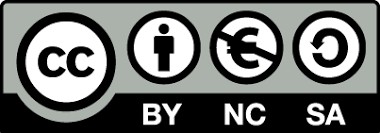บทคัดย่อ
หลักการและเหตุผล : ไตวายเรื้อรังระยะสุดท้าย (End stage kidney disease, ESKD) เป็นโรคที่คุกคามชีวิตผู้คนจำนวนมาก ซึ่งผู้ป่วยจำเป็นต้องเข้ารับการบำบัดทดแทนไตด้วยวิธีใดวิธีหนึ่งเพื่อให้มีชีวิตยืนยาว ประเทศไทยเริ่มให้สิทธิในการบำบัดทดแทนไต ภายใต้หลักประกันสุขภาพแห่งชาติ ใน พ.ศ. 2551 โดยผู้ป่วย ESKD ที่ขอรับบริการล้างไตทางช่องท้อง (peritoneal dialysis; PD) เป็นทางเลือกแรกจะไม่เสียค่าใช้จ่ายในการรักษา ทำให้ผู้ป่วยเข้าถึงบริการบำบัดทดแทนไตมากขึ้น แต่ยังมีผู้ป่วยบางรายที่ไม่เข้าเกณฑ์ต้องร่วมจ่ายค่าล้างไต จน พ.ศ. 2565 กองทุนสุขภาพปรับนโยบายบำบัดทดแทนไตเพื่อเอื้อประโยชน์ให้ผู้ป่วยสามารถเบิกจ่ายค่ารักษาได้ไม่ว่าจะเลือกล้างไตวิธีใดก็ตาม การเปลี่ยนแปลงทางนโยบายที่เกิดขึ้นชวนให้เกิดข้อสงสัยถึงเหตุผลของการปรับนโยบายที่จะสามารถเพิ่มการเข้าถึงบริการได้จริง รวมไปถึงผลกระทบที่จะตามมา วัตถุประสงค์ : เพื่อถอดบทเรียนจากนโยบายบำบัดทดแทนไตของประเทศไทยตั้งแต่ พ.ศ. 2551-2565 เพื่อให้เข้าใจถึงสภาวะแวดล้อมและการดำเนินงานของนโยบายบำบัดทดแทนไตในประเทศไทย สามารถนำไปอ้างอิงเพื่อการวิเคราะห์นโยบายในอนาคตสำหรับประเทศไทยและกลุ่มประเทศที่มีรายได้ต่ำและปานกลางอื่น ๆ อีกทั้งเพื่อสร้างความกระจ่างเกี่ยวกับสิ่งที่สนับสนุนและเป็นอุปสรรคต่อการบรรจุบริการบำบัดทดแทนไตในสิทธิหลักประกันสุขภาพแห่งชาติ ระเบียบวิธีการศึกษา : เป็นการวิจัยแบบผสมวิธีทั้งเชิงคุณภาพและเชิงปริมาณ โดยแบ่งออกเป็น 5 ส่วน ได้แก่ 1) การทบทวนวรรณกรรม 2) การสัมภาษณ์เชิงลึกและการอภิปรายกลุ่ม 3) การวิเคราะห์ข้อมูลการใช้บริการบำบัดทดแทนไต 4) การพัฒนาข้อเสนอแนะเชิงนโยบาย และ 5) การจัดประชุมคณะกรรมการเพื่อการเรียนรู้นโยบายบำบัดทดแทนไตในประเทศไทย สำหรับพิจารณาร่างข้อเสนอต่าง ๆ ตามวัตถุประสงค์ของงานวิจัย ผลการศึกษา : นโยบายบำบัดทดแทนไต พ.ศ. 2565 ทำให้ผู้ป่วยเข้าถึงการรักษาด้วยการฟอกเลือด (hemodialysis; HD) มากขึ้น ส่งผลให้จำนวนผู้ป่วย ESKD เพิ่มขึ้นจากแนวโน้มเดิม 50,478 คน เป็น 68,238 คน เกิดหน่วยบริการ HD ที่ดำเนินการโดยภาคเอกชนมากขึ้น จำนวนและอัตราผู้ป่วยเสียชีวิตจากการล้างไตสูงขึ้น โดยเฉพาะการเสียชีวิตในระยะเวลา 90 วัน หลังเริ่มล้างไตด้วยวิธี HD ภาระงบประมาณในการให้บริการบำบัดทดแทนไตของกองทุนสุขภาพเพิ่มขึ้น ขีดความสามารถในการให้บริการ PD ลดลงอย่างรวดเร็ว การเกิดแรงจูงใจทางการเงินที่ส่งผลต่อการตัดสินใจของอายุรแพทย์โรคไตในการแนะนำเลือกวิธีการบำบัดทดแทนไตและการเลือกหน่วยบริการให้แก่ผู้ป่วย สรุปผลการศึกษา : การปรับเปลี่ยนนโยบายบำบัดทดแทนไต พ.ศ. 2565 สร้างผลกระทบทั้งทางบวกและทางลบต่อการแพทย์ เศรษฐกิจ สังคม และจริยธรรมที่เกิดขึ้นกับผู้ป่วย สถานพยาบาล และผู้มีส่วนได้เสียอื่น ๆ อีกทั้งเป็นนโยบายที่ใช้ทรัพยากรมากกว่าแต่ได้ประโยชน์ทางสุขภาพโดยรวมต่ำกว่านโยบาย พ.ศ. 2551 ข้อดีของนโยบายใหม่ประการเดียวคือ การให้โอกาสผู้ป่วยเลือกวิธีการล้างไตได้ทั้ง HD และ PD ตามที่ผู้ป่วยต้องการและตัดสินใจสอดคล้องกับหลักการเคารพการตัดสินใจของผู้ป่วย (patient autonomy) และสามารถลดความเหลื่อมล้ำในการเข้าถึงวิธีการบำบัดทดแทนไตเมื่อเปรียบเทียบกับสิทธิการรักษาของกองทุนการรักษาพยาบาลอื่น ๆ ในประเทศ
บทคัดย่อ
Background End- stage kidney disease ( ESKD) is a life- threatening condition that affects many individuals,
requiring kidney replacement therapy ( KRT) to prolong their lives. Thailand began offering KRT under the
National Health Security System in 2008. Patients with ESKD who chose peritoneal dialysis ( PD) as their first
treatment option received it at no cost, which increased access to KRT for many. However, some patients who
did not meet the criteria were required to co- pay for dialysis. By 2022, the healthcare fund revised its KRT
policy, allowing patients to claim treatment costs regardless of the dialysis method selected. This policy change
raises questions about whether it truly improves service accessibility and its potential impacts.
Objective The aim of this study is to draw lessons from Thailand’s KRT policy from 2008 to 2022 to understand
the policy environment and its operations. The findings may provide valuable insights for future policy analysis
in Thailand and other low- and middle-income countries. Additionally, the study seeks to identify factors that
support or hinder the inclusion of KRT services in the National Health Security System.
Methods This research adopts a mixed- method approach, combining both qualitative and quantitative
techniques. It is divided into five sections: a literature review, in-depth interviews and focus group discussions,
analysis of KRT service utilization data, the development of policy recommendations, and the organization of
committee meetings to learn from Thailand’ s KRT policy and draft proposals in alignment with the study’ s
objectives.
Results The 2022 KRT policy resulted in increased access to hemodialysis ( HD) , with the number of ESKD
patients rising from 50,478 to 68,238. More private- sector HD service units were established. However, the
number and rate of dialysis- related deaths, particularly within 90 days of starting HD, also increased. The
financial burden on the healthcare fund for providing KRT services grew, while the capacity to deliver PD services
declined rapidly. Financial incentives influenced nephrologists’ decisions in recommending KRT methods and
service units to patients.
Conclusion The 2022 KRT policy changes had both positive and negative impacts across medical, economic,
social, and ethical dimensions, affecting patients, healthcare facilities, and other stakeholders. While it is a
resource-intensive policy with fewer overall health benefits compared to the 2008 policy, the main advantage
is that it allows patients to choose between HD and PD, aligning with the principle of patient autonomy and
reducing disparities in access to KRT when compared to other healthcare schemes in the country.


